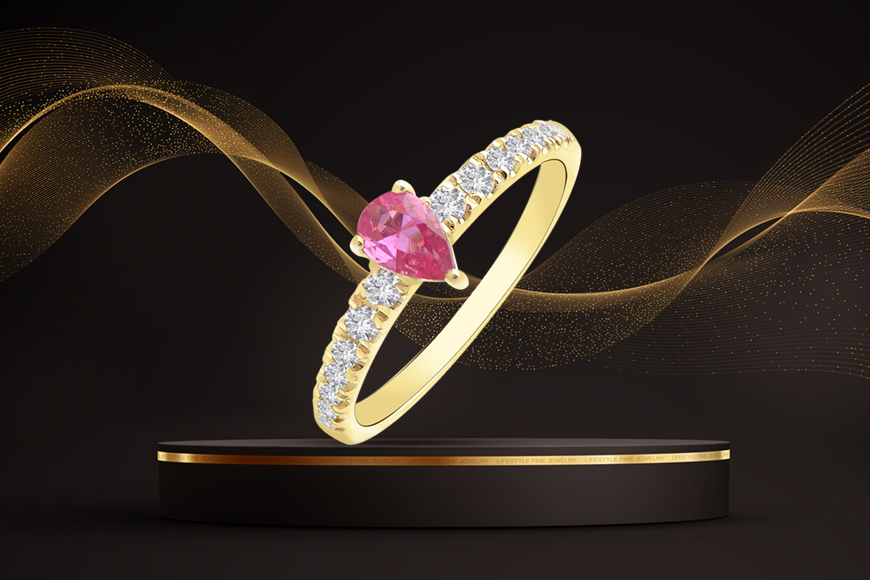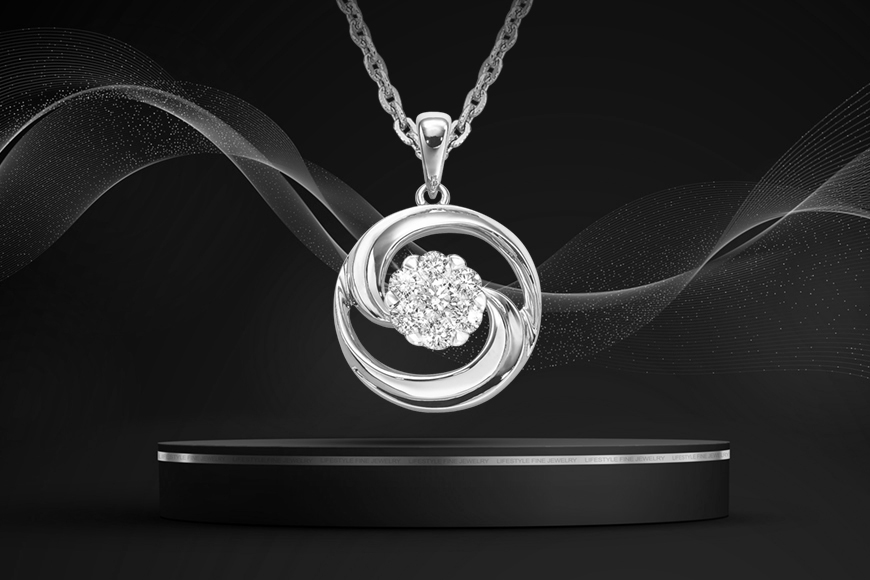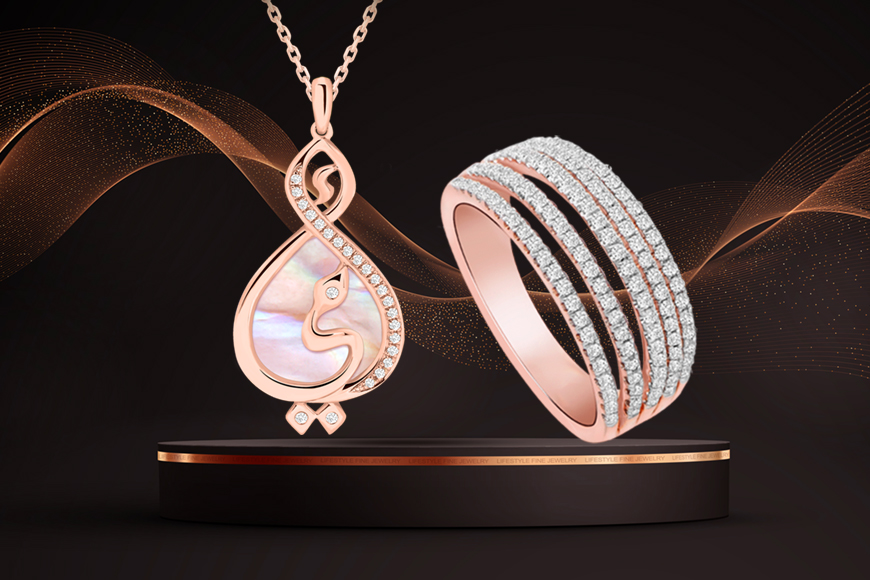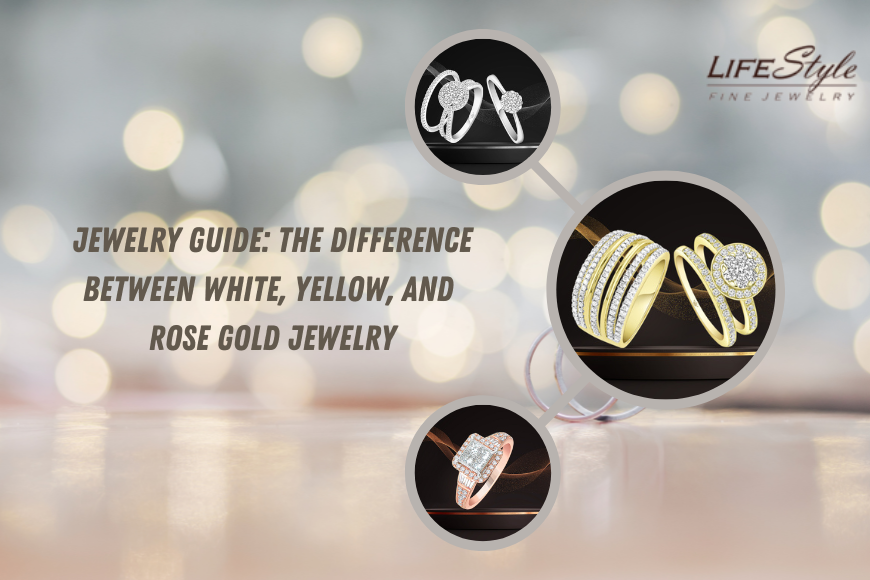The Difference Among White, Yellow, and Rose Gold Jewelry
Jewelry has held a special place in human culture for thousands of years, symbolizing status, beauty, and sentimentality. Among the many options available, gold has always stood out as one of the most cherished and sought-after materials for crafting exquisite jewelry. In its pure form, gold is a lustrous yellow metal, but through various alloying processes, jewelers can create different shades: white, yellow, and rose gold. In this comprehensive guide, we'll explore each type of gold's unique characteristics, composition, and popular uses, helping you decide when to choose the perfect piece to adorn yourself or your loved ones.
Before delving into the specifics of white, yellow, and rose gold, it is essential to understand the properties and significance of gold as a precious metal in jewelry making. With its inherent brilliance and durability, gold is a coveted material known for its resistance to tarnish and corrosion. The purity of gold is measured using different scales, including the karat system and fineness. The karat system represents the ratio of pure gold to other metals in the alloy, with 24 karat being pure gold. Conversely, Fineness expresses the purity of the gold as a decimal fraction out of 1,000.
Yellow Gold
Yellow gold is the most traditional and classic form of gold used in jewelry. It's renowned for its warm, radiant glow and has been cherished throughout history for its timeless appeal. Pure gold, measured at 24 karats, is too soft for most jewelry applications, so it's alloyed with other metals to increase its durability and strength. Common alloy metals used in yellow gold are copper and zinc, although some variations may include silver or nickel.
Yellow gold jewelry encompasses various styles and designs, from delicate and vintage-inspired pieces to bold and contemporary creations. It is a versatile option that complements various skin tones and outfits, adding a touch of elegance and sophistication to any ensemble.

Characteristics of Yellow Gold
- Rich, warm, and lustrous appearance.
- Classic and versatile, suitable for all types of jewelry.
- The karatage system indicates the percentage of pure gold, with 24K being pure gold,22K at 91% gold, 18K at 75% gold, 14K at 58.5% gold, and 10K at 41% gold.
White Gold
White gold is a modern and sophisticated alternative to traditional yellow gold. Its contemporary appearance has gained immense popularity in recent decades. White gold is created by alloying pure gold with white metals such as palladium, silver, or nickel and then coated with rhodium to enhance its brightness and shine.
Some individuals may have concerns about allergies or tarnishing with white gold jewelry. While white gold is generally hypoallergenic, those particularly sensitive to nickel should opt for white gold alloys that use palladium or silver to replace nickel. Proper care and maintenance can also prevent tarnishing, ensuring the longevity and beauty of white gold jewelry. Removing white gold jewelry before engaging in activities that may cause damage or expose it to harsh chemicals is advisable.
White gold jewelry offers a range of styles and designs, from delicate and intricate pieces to modern and minimalist creations. It provides a contemporary twist to classic designs, allowing individuals to express their unique style and fashion.

Characteristics of White Gold
- Elegantly sleek and contemporary appearance.
- Versatile, suitable for various jewelry styles.
- More affordable than platinum, with a similar appearance.
- White gold is often more affordable than platinum.
- White gold is generally durable and suitable for everyday wear.
Rose Gold
Rose gold, also known as pink or red gold, has grown significantly in popularity over the past decade. Its subtle, romantic, feminine hue distinguishes it from yellow and white gold. Rose gold is made by alloying pure gold with a higher proportion of copper, which gives it its characteristic pinkish-red tint.
The blend of pure gold with copper gives rose gold its soft pink hue, a shade that sets it apart from the traditional yellow and white gold.
The unique blush color of rose gold is achieved by mixing pure gold with copper and sometimes a hint of silver. The higher the copper content, the deeper the pinkish-red hue becomes, making each piece of rose gold jewelry truly one-of-a-kind.
The presence of copper not only gives rose gold its alluring color but also enhances its durability and strength. Unlike pure gold, which is relatively soft, the addition of copper ensures that rose gold jewelry is more resistant to wear and tear, making it a practical and enduring choice for everyday wear.
Rose gold jewelry effortlessly merges contemporary fashion with timeless elegance, making it suitable for both formal and casual occasions.
Whether it's an engagement ring symbolizing eternal love, a delicate necklace adorning the neckline, or a pair of chic earrings enhancing one's allure, rose gold jewelry adds a touch of sophistication to any outfit.
Its ability to blend seamlessly with other metals like yellow gold and platinum makes it a versatile option for mixing and matching with existing jewelry pieces.

Characteristics of Rose Gold
- Distinctive and unique appearance.
- Offers a soft, warm, and vintage-inspired glow.
- Complements a wide range of gemstones and suits various jewelry designs.
- Often chosen for its romantic symbolism.
Key Differences
When choosing between white gold and yellow gold jewelry, several key differences come into play:
Color:
The most apparent distinction between white gold and yellow gold is their color. Yellow gold showcases a warm and inviting hue that exudes classic elegance, while white gold offers a modern and silvery appearance.
Composition:
The composition of the alloys used in yellow gold and white gold significantly affects their properties and durability. Comp blending pure gold with copper and zinc creates yellow gold, resulting in its characteristic color and enhanced durability. White gold, on the other hand, is formed by combining pure gold with white metals like nickel, palladium, or silver, contributing to its silvery appearance and unique properties.
Maintenance:
Maintenance requirements differ between white gold and yellow gold jewelry. White gold jewelry requires occasional upkeep due to the rhodium plating process. Over time, the rhodium layer may wear off, necessitating re-plating to maintain the desired white appearance. Yellow gold jewelry, however, typically requires less maintenance as it does not undergo the rhodium plating process.
Style and Preference:
Personal style and individual preference play a significant role in choosing between white gold and yellow gold. While yellow gold offers a timeless and classic look that suits various occasions and outfits, white gold provides a more modern and contemporary aesthetic. When deciding, factors such as skin tone, personal style, and the desired jewelry type should be considered.
Tips for Choosing the Right Gold Jewelry
Consider Skin Tone
While personal preference is crucial in choosing gold jewelry, you can also consider your skin tone. Generally, people with cooler undertones may find white gold or rose gold more flattering, while those with warmer undertones may lean towards yellow gold.
Durability and Maintenance
Remember that since pure gold is relatively soft, higher karatage jewelry (18K or 24K) may be more prone to scratching and bending. If you lead an active lifestyle, you might prefer 14K gold or consider white gold, as the rhodium plating provides added protection.
Gemstone Complement
Different types of gold can enhance the appearance of specific gemstones. For instance, diamonds often look stunning in white gold or platinum settings, while warmer-colored gemstones like rubies or sapphires may shine in yellow or rose gold settings.
Mix and Match
Be bold and mix different types of gold jewelry for a stylish and contemporary look. Combining white, yellow, and rose gold pieces can create a unique and personalized statement.
Conclusion
Choosing between white, yellow, and rose gold jewelry boils down to personal style, preference, and intended use. Each type of gold offers unique characteristics and symbolism, making it an exciting decision when shopping for jewelry. Whether you prefer the timeless elegance of yellow gold, the modern allure of white gold, or the romantic charm of rose gold, you can be confident that your chosen piece will add a touch of beauty and sophistication to any occasion. When selecting, consider your skin tone, durability needs, and gemstone preferences, if any. Lifestylegcc.com is a one-stop solution for your jewelry needs So, let your heart guides you toward the gold that speaks to you the most.
Happy jewelry hunting!


